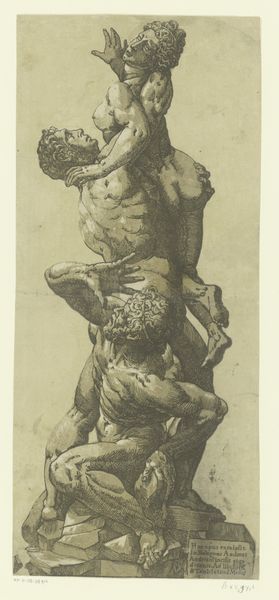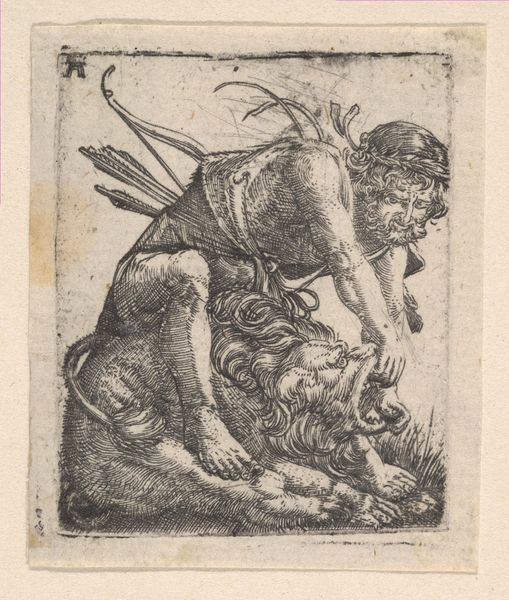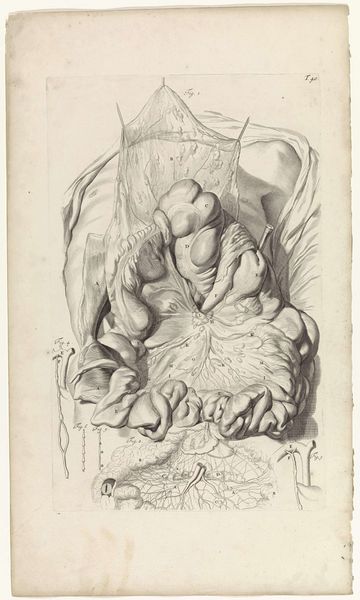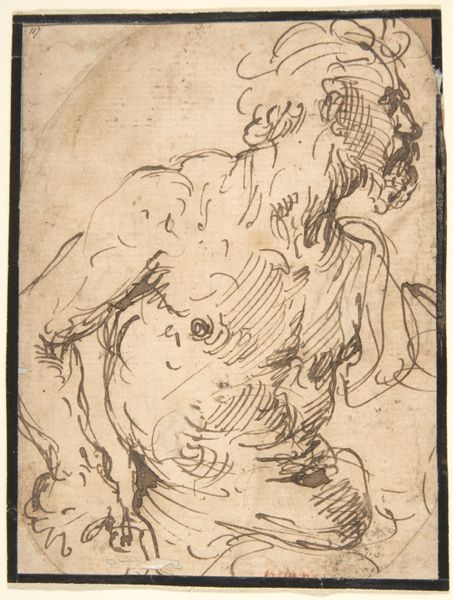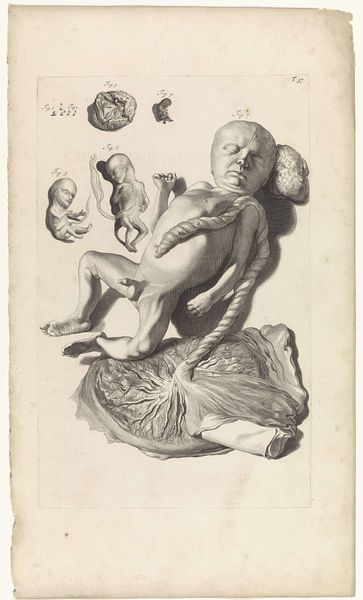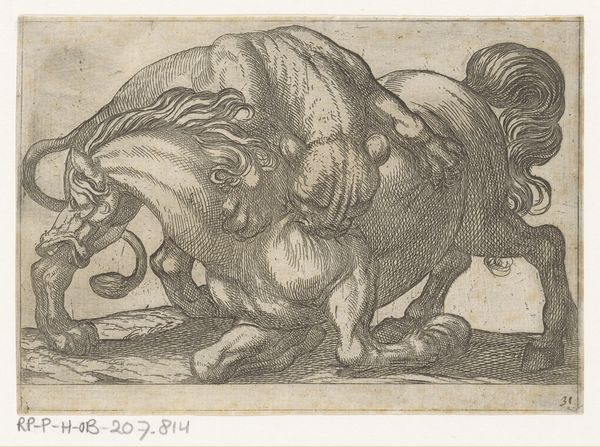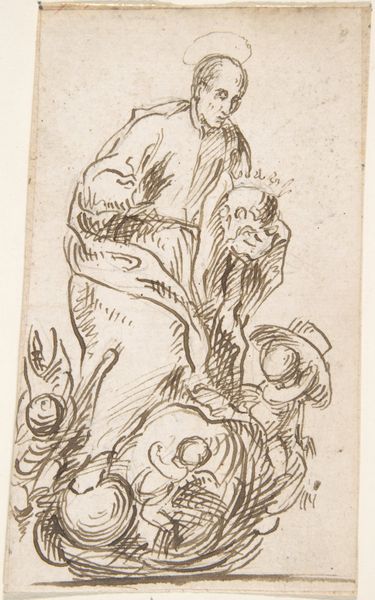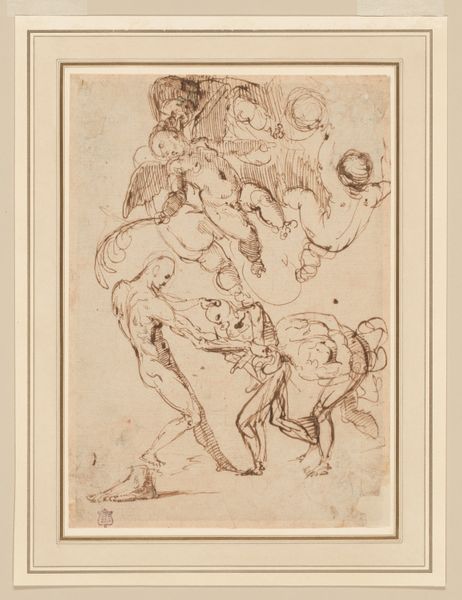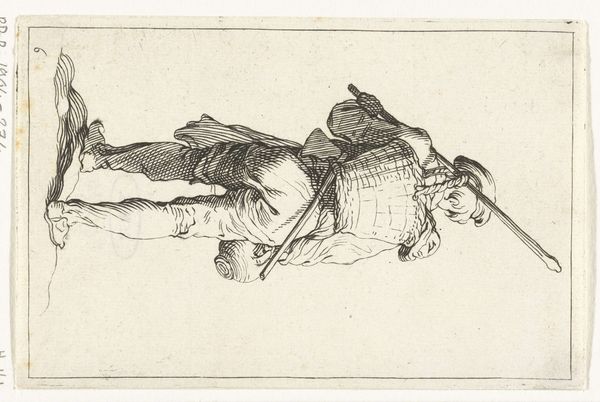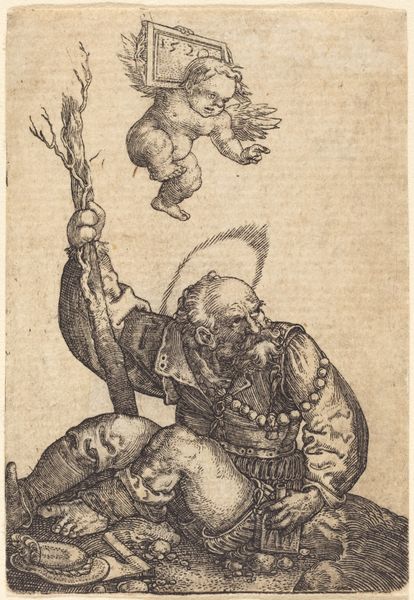
print, metal, etching, relief
# print
#
metal
#
etching
#
asian-art
#
relief
#
figuration
Dimensions: height 338 mm, width 286 mm
Copyright: Rijks Museum: Open Domain
Editor: This is “Monster met schedel” – “Monster with Skull” – a print by Maurits van der Valk, made sometime between 1867 and 1931. It’s an etching on metal, currently at the Rijksmuseum. I’m really struck by the textures, and the way the lines create such a strong sense of depth and form. What’s your take on it? Curator: Well, immediately I am drawn to the artist's mastery of line. Consider how the density and direction of the etched lines define the form. See how strategically they’re employed to create volume and shadow? The very subject matter is secondary to appreciating the skill and the choices made in representing it through this demanding medium. Editor: Right, it almost feels sculptural. I wonder why Van der Valk chose etching over other printmaking methods? Curator: Good question! Etching allows for a subtlety and detail often absent in, say, woodcuts. The artist could build up layers of tone with repeated acid baths, achieving a tonal range that mimics drawing. Look at the variations in light across the monster's face – do you notice the contrast in texture and detail in the rendering of the different segments of the form? Editor: Yes, now I see how he’s built it up. I was so focused on the monster image, that I didn’t realize the etching itself *was* the focus. Curator: Precisely! And consider the composition. The monster dominates the picture plane, its contours dynamic and compelling. It’s a superb demonstration of form and texture within a monochromatic palette. The absence of color forces us to engage more intently with the linework itself. Editor: I've certainly learned to appreciate the craft more by analyzing the lines and texture. Thanks for your insight! Curator: My pleasure. Approaching art through the lens of its intrinsic qualities can unlock profound appreciation.
Comments
No comments
Be the first to comment and join the conversation on the ultimate creative platform.
